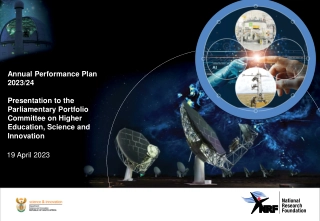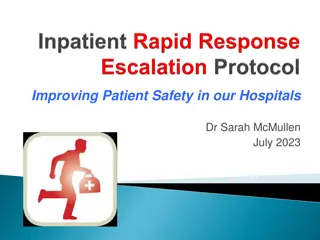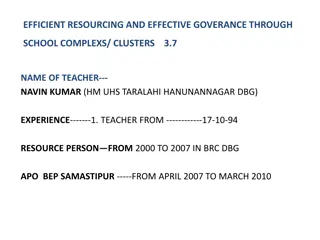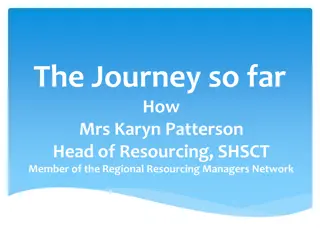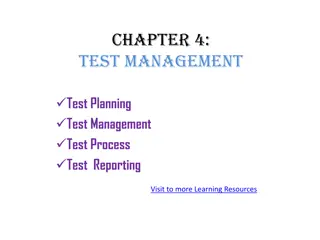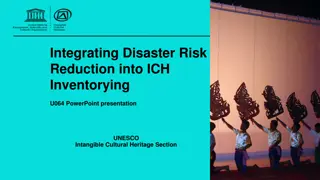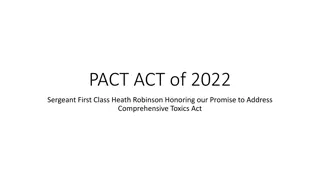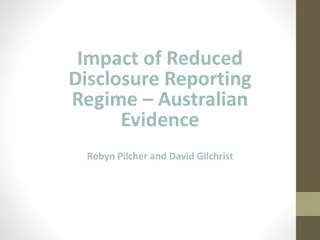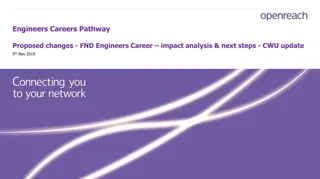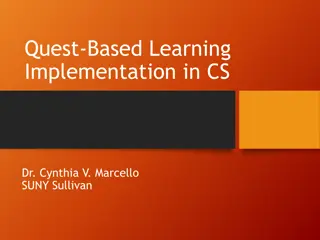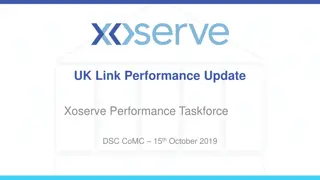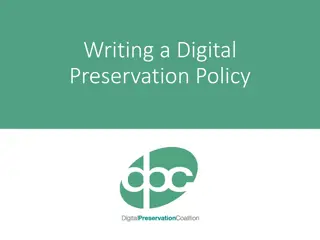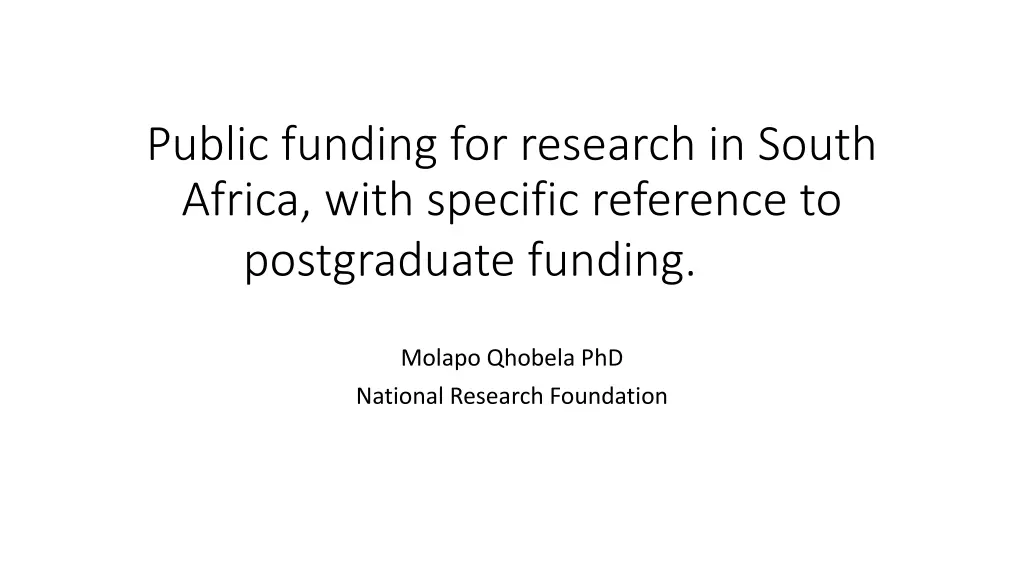
Public Funding for Postgraduate Research in South Africa with NRF and National Research Foundation
Discover the landscape of public funding for postgraduate research in South Africa, focusing on sources like student fees, government grants, and international funding agencies. Dive into the detailed allocations and growth trends shown in the Department of Science and Technology's science vote data and the National Research Foundation's grant allocation figures from 2010 to 2021.
Download Presentation

Please find below an Image/Link to download the presentation.
The content on the website is provided AS IS for your information and personal use only. It may not be sold, licensed, or shared on other websites without obtaining consent from the author. If you encounter any issues during the download, it is possible that the publisher has removed the file from their server.
You are allowed to download the files provided on this website for personal or commercial use, subject to the condition that they are used lawfully. All files are the property of their respective owners.
The content on the website is provided AS IS for your information and personal use only. It may not be sold, licensed, or shared on other websites without obtaining consent from the author.
E N D
Presentation Transcript
Public funding for research in South Africa, with specific reference to postgraduate funding. Molapo Qhobela PhD National Research Foundation
Student Fees Self Funding NSFAS - UG NRF PG SA and Int Funding Agencies Private Sector Government Grant - Block and Earmarked Total Income includes: Research Income Research and Infrastructure Grants & Contracts Income NRF SA Research Councils International Funding Agencies Student Fees and other Fees Council Controlled Earmarked Funding Other Income Research Income Sale of Goods and Services
SCIENCE VOTE: DEPARTMENT OF SCIENCE AND TECHNOLOGY R'millions 2013/14 2014/15 2015/16 2016/17 2017/18 2018/19 2019/20 6,198 6,470 7,482 7,429 7,557 7,916 8,191 Actual science vote 6,198 6,578 6,875 7,328 7,782 8,265 8,777 CPI adjusted science vote 6,198 6,694 6,988 8,081 8,023 8,162 8,549 Projected Growth of 8% science vote 4% 16% -1% 2% 5% 3% Actual Science Vote Movement 6.1% 4.5% 6.6% 6.2% 6.2% 6.2% Average CPI 8.0% 8.0% 8.0% 8.0% 8.0% 8.0% Projected NSI CPI estimated at 8% -1.7% 11.1% -7.3% -4.5% -1.5% -2.7% Annual CPI Shortfall % (Real Terms) -3.6% 7.6% -8.7% -6.3% -3.3% -4.5% Annual NSI CPI Shortfall % (Real Terms) * Negative real growth except for 2015/16 Annual CPI Shortfall (R'million) -108 607 101 -225 -349 -586 Annual Shortfall on a 8% growth (R'million) -224 494 -652 -466 -246 -358 6,198 6,175 6,162 6,136 6,112 6,089 6,065 Real Value Dics. for Inflation
NATIONAL RESEARCH FOUNDATION HIGH LEVEL MTEF PARLIAMENTARY GRANT ALLOCATION FROM 2010/11 to 2020/21 (R'000) 2010/11 2011/12 2012/13 2013/14 2014/15 2015/16 2016/17 2017/18 2018/19 2019/20 2020/21 Received (excl HMO) Received (excl HMO) Final MTEF letter Final MTEF letter Final MTEF letter Received Received Received Received Received Received CORE MTEF incl NZG 728,174 768,944 765,573 816,204 853,158 878,399 882,805 925,964 904,752 953,365 1,005,799 NZG (includes WBRC) 46,150 51,039 51,805 53,359 56,560 59,728 62,714 65,851 - - - NZG sustainability 40% of NRF contribution CORE MTEF excl NZG 3,000 3,000 3,000 3,000 682,024 717,905 710,768 759,845 793,598 815,671 817,091 3,000 860,113 - 904,752 - 953,365 - 1,005,799 - TOTAL NRF ALLOCATION 728,174 768,944 765,573 816,204 853,158 878,399 882,805 925,964 904,752 953,365 1,005,799 518,966 426,374 358,307 317,676 Other sources of contract income 5.1% 5.3% -1.0% 6.9% 4.4% 2.8% 0.2% 5.3% 5.2% 5.4% 5.5% Actual CORE movement Average CPI 4.10% 5.01% 5.75% 5.77% 6.13% 4.51% 6.59% 5.19% 6.10% 6.00% 6.00% 1.0% 0.3% -6.7% 1.1% -1.7% -1.7% -6.4% 0.1% -0.9% -0.6% -0.5% Annual CPI shortfall Cumulative effect of inflation erosion on the value of one rand 100% 95% 90% 84% 79% 76% 71% 67% 63% 59% 56% Core based on the buying power of the rand in 2010/11 682,024 681,938 636,337 641,023 628,457 616,805 577,161 576,018 568,952 563,551 558,873 CPI based increase on Core using 201/11 baseline 675,231 709,060 749,831 793,096 841,713 879,674 937,645 986,309 1,046,474 1,109,262 1,175,818 Annual funding gap on Core in nominal terms 6,793 8,845 -39,063 -33,251 -48,115 -64,003 -120,554 -126,196 -141,722 -155,897 -170,019 REAL inflation relative to NRF based on CPI+3% 7.1% 8.0% 8.8% 8.8% 9.1% 7.5% 9.6% 8.2% 9.1% 9.0% 9.0% REAL increase of CPI+3% on 2010/11 baseline 682,024 736,654 801,111 871,369 950,925 1,022,339 1,120,382 1,212,141 1,322,446 1,441,466 1,571,198 Notes: 2,223,782 1. NZG is not included in above figures as it has been transferred to SANBI from 2018/19. 2. HMO not included in above figures as DST transferred funds directly to SANSA from 2013/14. 3. The above excludes other contract directed funding from the DST 4. NRF funding in real terms currently at R576 mil is below well below the 2010 value of R682 mil 5. Based on real growth using 2010 baseline the NRF allocation should at least be R1,3 bil in 2018/19 but is only at R904 mil.
National Eqipment Programme , 112, 5% Postgraduate Students, 960, 40% Strategic Investments, 682, 28% R2.4 bn Total investment in the human capacity development, research support, and the provision of research infrastructure, through the award of grants and bursaries R million Emerging Researchers, 238, 10% Established Researchers, 283, 12% Cross Cutting Investments, 125, 5% 5
1 The NRF will include financial need in the criteria for awarding postgraduate bursaries. Financially needy students will be funded without interruption for postgraduate studies completed within regulation time, at total cost of study (TCS). However, this policy recommendation will be restricted to SA Citizens and permanent residents 2 To encourage the retention of all high academic achievers to pursue postgraduate studies up to the Doctoral degree within regulation time, it is proposed that these students should be funded without interruption, at TCS. However, this policy recommendation will be restricted to SA Citizens and permanent residents. 3 To encourage higher participation in postgraduate studies, all NRF bursary values for partial cost of study (PCS) will be adequate and cover at least tuition and accommodation costs. 4 To contribute to a reduction in the time to completion, it is proposed that the NRF prioritises funding full-time studies in line with regulation times whilst being sensitive to discipline and societal specific norms. 5 To contribute to lowering of age at Doctoral completion, it is proposed that NRF eligibility criteria for bursaries for full time studies, should have an age limit to achieve Doctoral completion by age 35. 6 All postgraduate bursaries across the NRF funding landscape should be allocated as follows: RACE: 80% Black (African, Coloured, Asian and Indian); GENDER: 55% women and NATIONALITY :90% South African and Permanent residents and 10% rest of the world 7 The majority of student bursaries will be awarded in a directed manner so as to respond to national priorities, vulnerable disciplines and fields important for socio-economic development, as may be identified from time to time. 8
Enkosi, Thank you, Re a leboga, Siyabonga, Dankie

